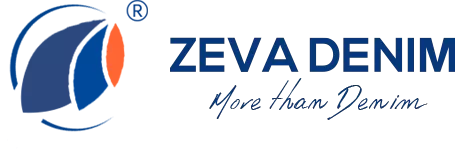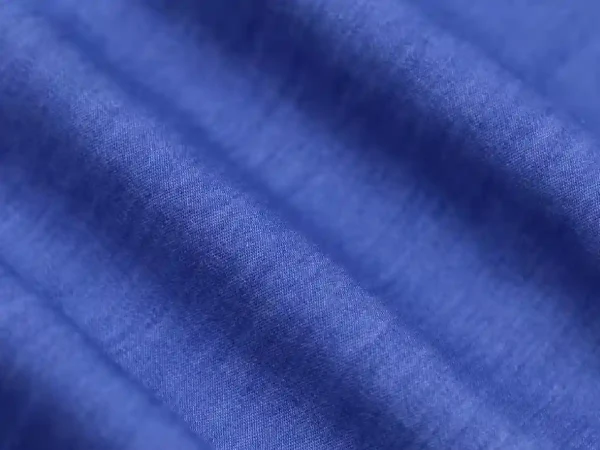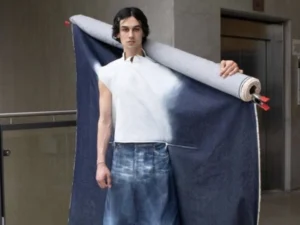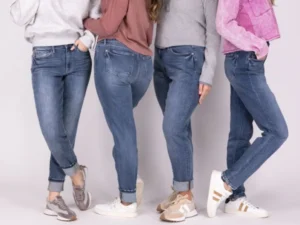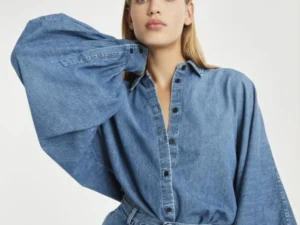Do you know what are the top 3 most frequently used weaving methods for denim fabric? These three weaving methods form the foundation of denim fabric production, each offering distinct characteristics and applications. While the first one, twill weave remains the most popular choice, secondly, the broken twill weave and followed by plain weave The third method also has its place in denim manufacturing, providing different visual effects and qualities. After the first two steps of preparation preparing the cotton and spinning it to yarand n, color dyeing, now, we are fully prepared and start the weaving procedure. Here are what we are focusing on today:
- Early weaving techniques and their limitations
- Innovations in denim weaving over the years
- Basic Weave Patterns for Denim Fabric
- Specialized Weaving Techniques for Denim Fabric
- Conclusion
Early weaving techniques and their limitations
In its early years, denim was primarily woven using a plain weave, where the weft threads pass over and under individual warp threads in a simple, balanced pattern. While this provided strength, plain-woven denim lacked the distinctive diagonal twill lines that have become synonymous with the fabric.
Innovations in denim weaving over the years
To enhance the durability and give denim its iconic appearance, a twill weave was introduced, utilizing a diagonal pattern. The twill weave allowed for greater flexibility and strength, making it ideal for workwear and jeans.
Basic Weave Patterns for Denim Fabric
Plain Weave
Plain weave is a simple and balanced weaving technique where the weft threads pass over and under individual warp threads in an alternating manner. Although not as frequently used as twill weave, plain weave denim has its advantages. It offers excellent durability, breathability, and a uniform appearance. It is commonly used for lightweight denim garments like shirts, skirts, and dresses.
- Description and construction
The plain weave pattern consists of weft threads passing over and under individual warp threads in an alternating manner, creating a balanced and even textured fabric. This straightforward construction gives plain-woven denim a strong and uniform appearance.
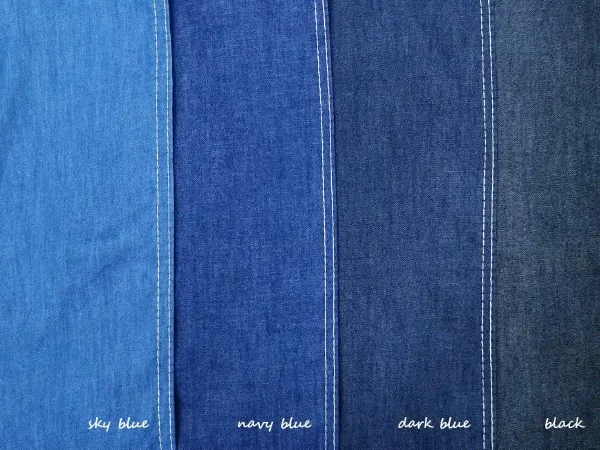
- Advantages and limitations
The plain weave offers excellent durability and breathability while maintaining a relatively lightweight feel. However, plain-woven denim lacks the distinctive diagonal lines found in twill weaves, making it less visually appealing for those seeking the classic denim appearance.
Plain weave denim fabrics are commonly used for lightweight garments like denim shirts, skirts, and dresses. They are also preferred for summer wear due to their breathability and comfort.
Twill Weave
Twill weave is the most commonly used weaving technique for denim fabric. It is characterized by its distinctive diagonal lines formed by the weft threads passing over a specified number of warp threads before going under. Twill weave denim offers durability, flexibility, and texture, making it ideal for jeans and other sturdy garments.
- Description and construction
The twill weave pattern is characterized by diagonal lines that alternate in direction with each row. This weaving technique is achieved by passing the weft threads over a specified number of warp threads before going under.
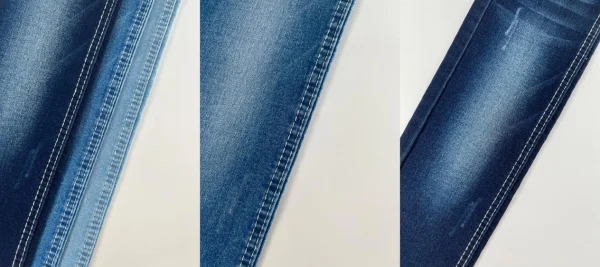
- Advantages and limitations
Twill weave denim offers superior flexibility, durability, and texture compared to plain weave. The diagonal lines give it a visually appealing and recognizable appearance. However, the twill weave can be more prone to snagging and fraying.
Twill weave denim is extensively used for the production of quality jeans, as the diagonal pattern enhances comfort, flexibility, and strength. Jackets, overalls, and other sturdy garments also make use of twill-woven denim.
Specialized Weaving Techniques for Denim Fabric
Broken Twill Weave
Broken twill weave is a variation of the traditional twill weave. It features irregular diagonal lines that change direction after a few rows, creating a zigzag pattern. Broken twill-weave denim provides a unique visual appeal while maintaining the strength and flexibility of traditional twill-weave denim. It is often used for jeans and jackets to give them a more textured and dynamic look.
- Description and construction
Broken twill weave is a variation of the traditional twill weave, characterized by irregular diagonal lines. Instead of a consistent diagonal pattern, the broken twill weave changes direction after a few rows, resulting in a distinctive zigzag appearance.
- Advantages and limitations
Broken twill weave offers unique visual appeal while maintaining the strength, durability, and flexibility of traditional twill-weave denim. This weaving technique also reduces leg twists, a common issue found in regular twill denim. Jeans and jackets made from broken twill weave denim often provide a more textured and dynamic look, appealing to those seeking a design variation with a flair of individuality.
Crosshatch Weave
- Description and construction
A Crosshatch weave, also known as a herringbone weave, is created by interlacing the warp and weft threads in a manner that resembles the structure of a fishbone or a herringbone pattern.
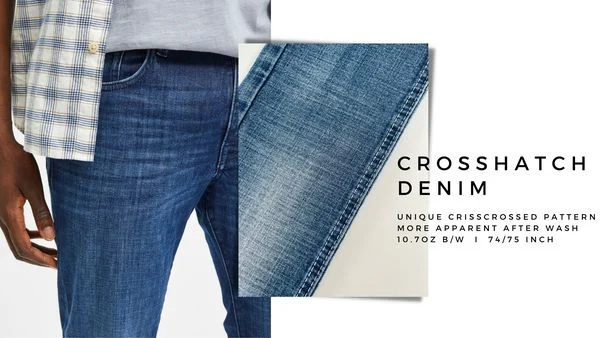
- Advantages and limitations
Crosshatch weave denim serves as an attractive design alternative to traditional twill weaves. The pattern adds depth, texture, and visual interest to the fabric. However, the intricate construction can make it more challenging to produce and increase the risk of snags.
Crosshatch weave denim is commonly used in fashion-forward garments, providing a modern twist to traditional denim styles.
Jacquard Weave
- Description and construction
Jacquard weave is a complex weaving technique that allows for intricate and decorative patterns to be woven directly into the fabric by controlling individual warp threads.
- Advantages and limitations
Jacquard weave denim offers limitless design possibilities, as patterns, logos, and even images can be woven into the fabric. However, this technique is time-consuming and more expensive, making it less common in mass-market denim production.
Jacquard weave denim is often employed in high-end fashion and specialized denim lines, providing a unique and customized touch to designer jeans and exclusive collections.
Conclusion
Understanding the various weave patterns used in denim fabric is essential for appreciating the versatility and diversity of this iconic textile. From the basic plain and twill weaves to specialized techniques like broken twill, crosshatch, and jacquard, each weaving method brings its unique aesthetic appeal, durability, and design possibilities to denim fabric.
By recognizing the importance and characteristics of each weaving technique, we can gain a deeper appreciation for the craftsmanship and innovation involved in denim production, ensuring that denim remains a timeless and cherished fabric in the world of fashion and everyday wear.
Happy Reading!
